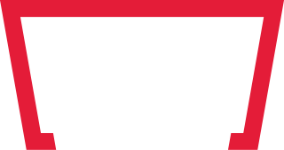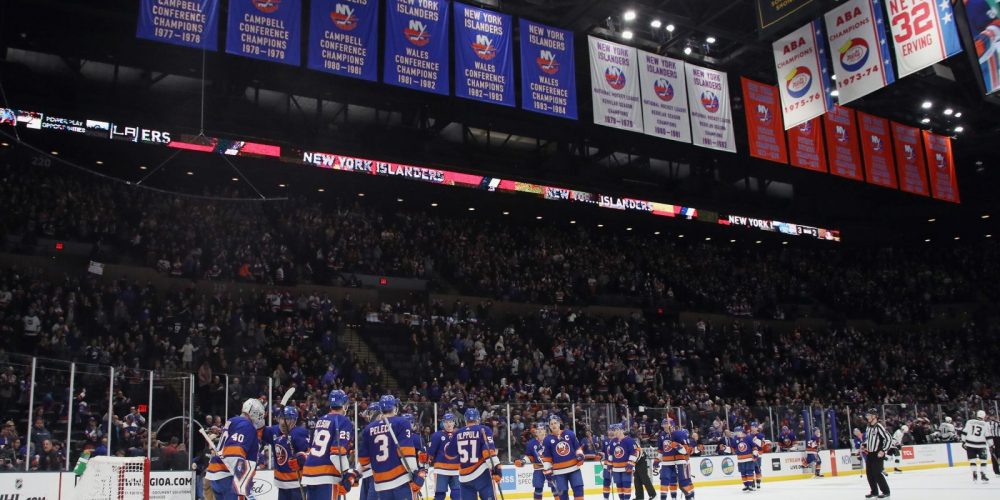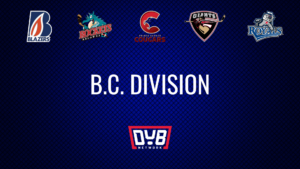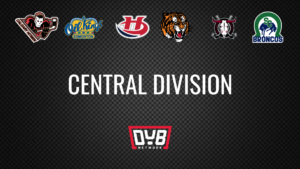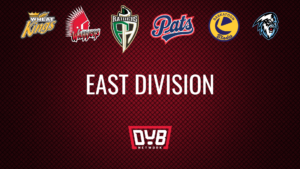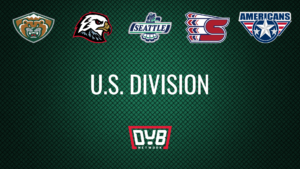Welcome to the second and final installment of SIMPSO, chronicling the coaching career of the legendary Terry Simpson as part of our WHL Coaching Legends series. The former P.A. Raiders, Red Deer Rebels, New York Islanders, Winnipeg Jets, and Philadelphia Flyers Head Coach and Toronto Maple Leafs Assistant Coach spoke to us this month from his home in Saskatoon where he’s enjoyed retirement for the past 20 years.
In Part I, the man for whom Terry Simpson Lane is named in Prince Albert (the address of the Art Hauser Centre), explained growing up in Shellbrook, SK, winning eight SJHL titles and one Memorial Cup with the Raiders plus a World Juniors championship.
By the summer of 1986, Terry was headed for prime time. He’d just been hired as head coach of one of the NHL’s fabled franchises, the New York Islanders.
Here we go.
“When I arrived on the scene Bill Torre was the Islanders General Manager and he acknowledged that the team was getting older,” Terry advised. “But I remember the mandate; it was ‘We wanna change over our team but we don’t want to miss the playoffs.’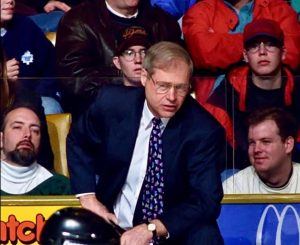
If there was ever a case of ‘Easier said than done!‘ It wasn’t just that the team had gotten old. This was a dressing room stocked with Hall of Famers, who were still hallowed in the Big Apple for winning four consecutive Stanley Cups just a few years before.
There was going to be some pain ahead. For someone.
“The team was getting older,” Simpson acknowledged. “When I arrived there, just before that training camp they’d already moved out Clark Gillies and Bob Bourne. That was the start of it. Then Nystrom had the eye injury so he wasn’t playing.
“There were some great players there like Potvin, Bossy, Trottier, Kenny Morrow, and Bill Smith. They were getting older but were still great players. We did have some good young guys too like Pat Lafontaine, Brent Sutter, Patrick Flatley, and Kelly Hrudey. But the mandate was we didn’t want to miss the playoffs.”
The team had success and I recall following closely as a fan of Simpso from the P.A. days. The Islanders never did miss the playoffs on his watch.
In ’86-’87 the Islanders won 35 games and beat the Washington Capitals in Round 1 in a seven-game series. That was the vaunted quadruple overtime Game 7 which saw Lafontaine shelf it past Caps goalie Bob Mason at 8:47 of the 4th OT. It was the longest Stanley Cup Playoff game ever.
The Isles lost Round 2 to Philadelphia in another seven-game series.
In ’87-’88, New York actually improved to 39 wins but lost in Round 1 in a six-game series to New Jersey.
Then the bottom fell out. In ’88-’89 the Islanders stumbled out to a 7-18-2 record and for the first time in his life, Terry Simpson was fired.
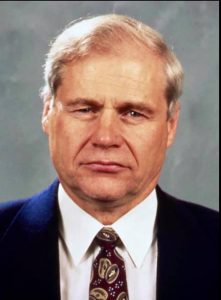 “I got fired after, I think it was on December the 7th, and that year we’d had some injuries,” Simpso recalled. “We made a conscious decision to start the season with three rookie defencemen and that probably wasn’t a good idea. We had Dean Chynoweth, Richie Pilon, and Jeff Norton. It wasn’t their fault, but we just didn’t have a lot of experience on the back-end.
“I got fired after, I think it was on December the 7th, and that year we’d had some injuries,” Simpso recalled. “We made a conscious decision to start the season with three rookie defencemen and that probably wasn’t a good idea. We had Dean Chynoweth, Richie Pilon, and Jeff Norton. It wasn’t their fault, but we just didn’t have a lot of experience on the back-end.
“But you know, you’re paid to win in the NHL. If you don’t win, it’s the apple and the road map.”
He shrugs about it now. But I knew there just had to be some anguish behind how it all went down. Besides, Terry had never been fired before! And this was under the intense glare of the National Hockey League, and New York City.
“It was pretty traumatic,” Simpson admitted. “We lost seven or eight in a row and I never even thought I’d get fired. I knew we were having a tough time but I never really thought about it. When I went to work that morning I knew something was up. I was shocked.
“The first time you get fired, everybody says ‘Ya, ya you’re hired to be fired, that’s the nature of the job’ but the truth is you don’t expect it. It really knocks you back a little bit. After it’s happened two or three times, you sorta get immune to it!”
And it would happen a few more times through the decade of the 1990s. We won’t get into the minutiae of Terry’s NHL stints during that decade but they included a 43-47-7 record as head coach of the Winnipeg Jets (plus four seasons there as an Assistant), a 35-39-10 ledger as head man with the Philadelphia Flyers, and two seasons as Assistant Coach of the Toronto Maple Leafs from 1996-1998.
How does he describe that entire NHL whirlwind?
“When I look back on the Islander thing, to start with, and I look back on the mistakes I made, one of the bigger ones is that I probably pushed the team too hard,” Simpson reflected. “The Islanders had come off all those Stanley Cups and it was all those same guys there of course. That’s a real drag trying to win Cup after Cup after Cup.
“And then of course I go in there with a mandate to change the team but don’t miss the playoffs, and I’ve got my junior hockey mentality of pushing, pushing, pushing. Probably I didn’t adapt to that quick enough.
“By Year 3 on Long Island, I was feeling more and more comfortable all the time with what was going on. But then the losing streak started.
“From there I went to the Winnipeg Jets in an Assistant’s role and you know, I enjoyed it! The thing about NHL players is they’re all good guys. They may not like you as a coach, but they’re really good guys. They do their job and they’re respectful. I really enjoyed the player relationships, moreso as an Assistant because you can be closer to the players.”
The coaches will all tell you that hockey’s hockey and you do see guys going back-and-forth from the pros to junior all the time. However you can’t tell me there isn’t a significant difference between the two and most coaches, I would think, have a preference.
Simpso agrees.
“Rod what I think is, and it’s my own personal opinion, but coaching in junior hockey is pure coaching,” Terry continued. “Because you have the developmental side of it. You see kids come in as a 16-year old and they’re pretty timid, not sure what’s going on. Pretty soon they leave as a 19-year old and they’re on top of the world. You see them grow up and go onto success in whatever they happen to be doing.
“In junior hockey, you have more control over what’s going on. You just do. And I got a lot of satisfaction out of that. I mentioned it to Craig Hartsburg in Philly after we got whacked out of there. He went to coach in the OHL, and I told him that he’d enjoy it a lot because it’s just pure coaching. I saw him a few years later and he said I was right.
“The thing is junior doesn’t pay quite as well!”
It doesn’t, but it’s a heckuva lot of fun.
And you could make some bucks as an owner in the Western Hockey League and that’s exactly what Terry and his brother Wayne Simpson did when they started up the Red Deer Rebels in 1992 as an expansion franchise.
“Ya that was another highlight,” Terry smiled. “I kinda fell into that thing. When I’d originally got fired with the Islanders, I was back home doing nothing. I was pretty familiar with the Western League so we went to Red Deer and started snooping around thinking maybe we could put a team in the old rink. Something like the Flames did with the Corral.
“It was a small rink and I put a whole package and proposal together and submitted it to the WHL but they turned it down. They said the facility wasn’t good enough of course.
“Then I’m the Assistant Coach in Winnipeg and they decide in Red Deer they’re going to build a new rink. The Westerner was going to build a new rink and they got ahold of me to see if I was still interested in being a part of getting a team.
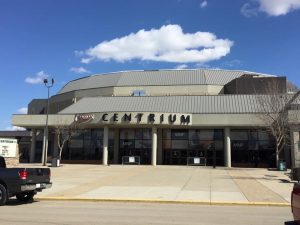 “One thing led to another and we got going with that. That was really good. There again I was kind of torn between the NHL and owning the Rebels. Eventually, my brother went and ran the Rebels and we got by that way.”
“One thing led to another and we got going with that. That was really good. There again I was kind of torn between the NHL and owning the Rebels. Eventually, my brother went and ran the Rebels and we got by that way.”
A few notes on that. The Simpsons’ Midas Touch continued. They really had a hit on their hands with the Rebels who routinely packed the Centrium for years and years. Central Alberta is a hockey hotbed and this was a slamdunk.
In the mid-’90s Wayne Simpson asked the Regina Pats for permission to speak to me about becoming the Rebels radio voice. Wayne and I spoke over the phone but I politely declined, saying the Regina Pats radio position was my dream job.
All these years later I mentioned that to Terry during this interview. He laughed and said, “I understand.”
Throughout all of these travails, Terry Simpson’s last-ever game coached was in 1999 on the Rebels bench. He took over the reins for one season, 1998-99, going 34-33-5.
On May 11, 1999, the Simpsons sold the Rebels to Brent Sutter, and to say that’s been a success would be an understatement.
The footnote on all of this is the famed Terry Simpson Coaching Factory which he was unknowingly creating during the ’70s and ’80s with the Prince Albert Raiders.
In football, they call it the “Coaching Tree”. I don’t know what you call it in hockey but we’ve marveled for years about big-name coaches who came out of the Communiplex during the Simpson Era.
“I really haven’t taken stock but we had quite a few guys who went through our organization and went on to coach, and are still coaching and managing,” Terry reflected. “I don’t know if I had any bearing on their careers. We had Peter Anholdt, Brad and Dave Tippett, Kelly and Brad McCrimmon, Darcy Regier, Emmanual Viveiros came through here, James Patrick, Curtis Hunt, David Manson, Lorne Molleken spent a year in P.A. Lorne was a guy I least thought would turn out to be a coach! And then Donny Clark, Bobby Lowes, and Doug Hobson and a few guys coached the P.A. Midget Raiders like Rod Dallman and Kenny Morrison. Dale McPhee coached a bit and went on to be President of the Raiders.
“You don’t know if the organization had a part in that. I’m sure it touched them in some degree. It’s pretty hard to say ‘I knew this guy was going to be a coach’. You can’t say that about any of the guys. When you look back, maybe a guy like Dave Tippett or somebody like that, but that’s the way it turns out.”
Obviously, it’s not a coincidence. Terry Simpson’s way of doing things is impactful and clearly, it rubbed off on all his players. Was it a particular philosophy?
“I didn’t really have a philosophy but I’ll say I learned to ‘coach what you have’,” Simpso advised. “When we were in junior we had offensive teams all the time who led the league in Goals For every year. We had offensive players. And when I went to the NHL, I was dubbed a defensive coach for some reason. I really don’t know why.
“You coach what you have. When I look at our junior days, the most important part of your organization is your scouting system. We had good scouts which meant we had good players. That’s where it all leads to.”
Hockey management types’ and scouts’ ears just perked up. This is where Terry explained the key to it all.
“Originally when we started out in P.A. we had Bob Robson who did it part-time,” Simpson explained. “In Tier II there wasn’t a lot of scouting but once you establish your organization, players are lining up to come to play for you. When we went to the WHL, Milt Fischer was our head guy and he had bird dogs all over like your Dad. He did a really good job.
“Bird dogs are so valuable because they know the history of players. Milt comes into town and identifies players but the bird dog in that town knows where a player goes to school, this and that. That’s why they’re so important.”
One more footnote. Terry Simpson was famous for furiously gnawing on gum. Always. In fact, you rarely saw him without a stick of gum in his mouth, unless he was eating. It was almost like a nervous habit, or stress-reliever.
What’s his favourite brand?
“Wrigley’s Spearmint,” Terry winked. “Hahahaha.”
These days, Simpso would’ve had an endorsement deal for that.
The Rod Pedersen Show airs daily at 12:00 pm ET on Game+ TV Network in over 1.2-million homes in Canada and the USA. It’s available in Manitoba on Bell/MTS Cable, in Saskatchewan on SaskTel Max TV, in Alberta & BC on Telus Optik TV, and in Washington and Oregon states on TDS Cable. It’s also simulcast on Facebook Live and RodPedersen.com/ListenLive
